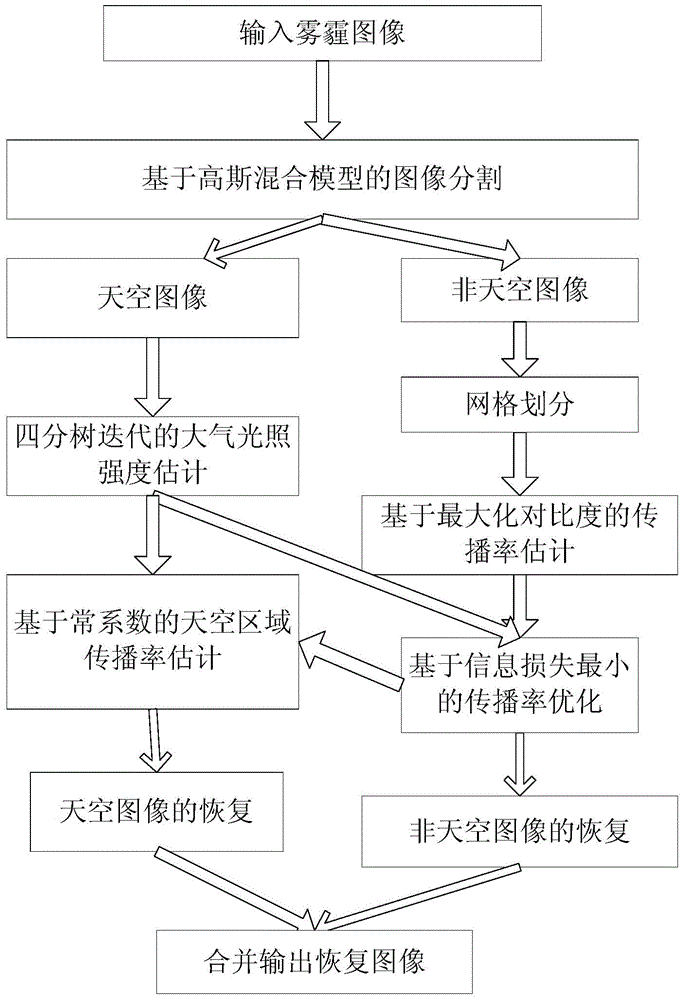An image defogging method with optimal contrast and minimum information loss
A technology of information loss and contrast, applied in image enhancement, image data processing, instruments, etc., can solve problems such as inability to correctly estimate depth of field, inability to remove haze, sky color distortion, etc., to avoid color distortion or oversaturation, good Accuracy, good local effect
- Summary
- Abstract
- Description
- Claims
- Application Information
AI Technical Summary
Problems solved by technology
Method used
Image
Examples
Embodiment Construction
[0029] This method is divided into three parts: segmentation of sky and non-sky areas, non-sky area dehazing based on contrast maximization and information loss minimization, and sky area dehazing based on constant proportional coefficient method. The specific workflow is shown in Figure 1 Show.
[0030] Step 1, establish a haze image model based on the McCartney atmospheric scattering model
[0031] Assuming that the image lighting model under the haze condition is, the haze image is equal to the image of the original target image after the haze transmission plus the image superposition after the atmospheric light intensity at infinity is blocked by the haze
[0032] I c (p)=t(p)J c (p)+(1-t(p))A c (1)
[0033] Among them, J c (p) and I c (p) represents the pixel point p of the original image and the observed image respectively, and c∈{r,g,b) represents the three color channels of red, green and blue. A c Represents the light intensity at infinity along the observer'...
PUM
 Login to View More
Login to View More Abstract
Description
Claims
Application Information
 Login to View More
Login to View More - R&D
- Intellectual Property
- Life Sciences
- Materials
- Tech Scout
- Unparalleled Data Quality
- Higher Quality Content
- 60% Fewer Hallucinations
Browse by: Latest US Patents, China's latest patents, Technical Efficacy Thesaurus, Application Domain, Technology Topic, Popular Technical Reports.
© 2025 PatSnap. All rights reserved.Legal|Privacy policy|Modern Slavery Act Transparency Statement|Sitemap|About US| Contact US: help@patsnap.com



